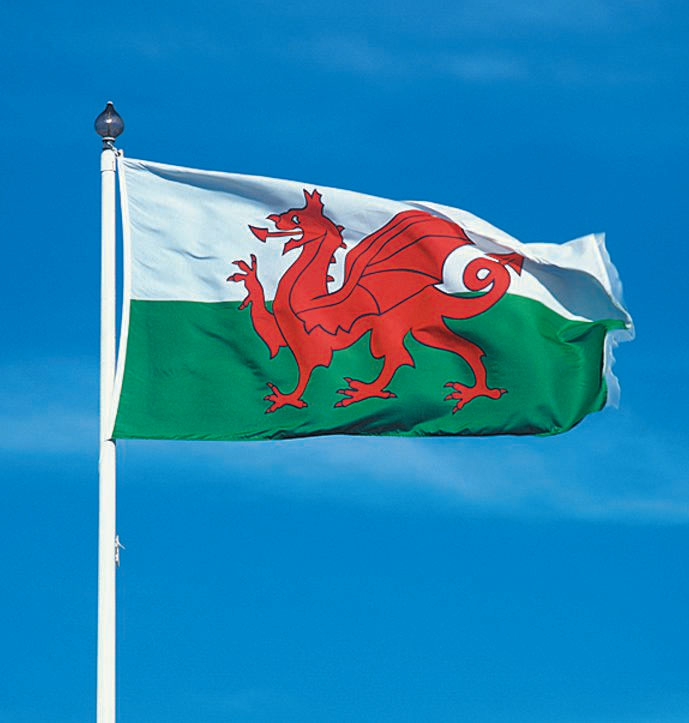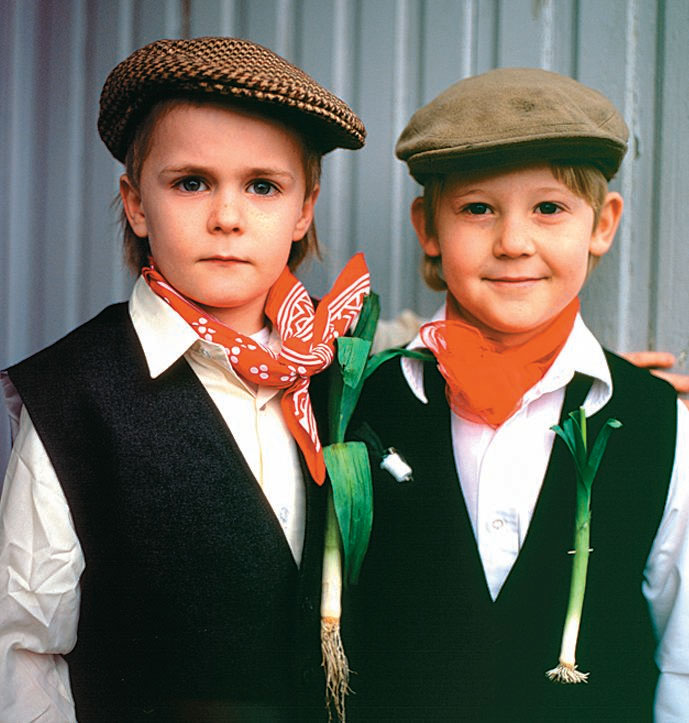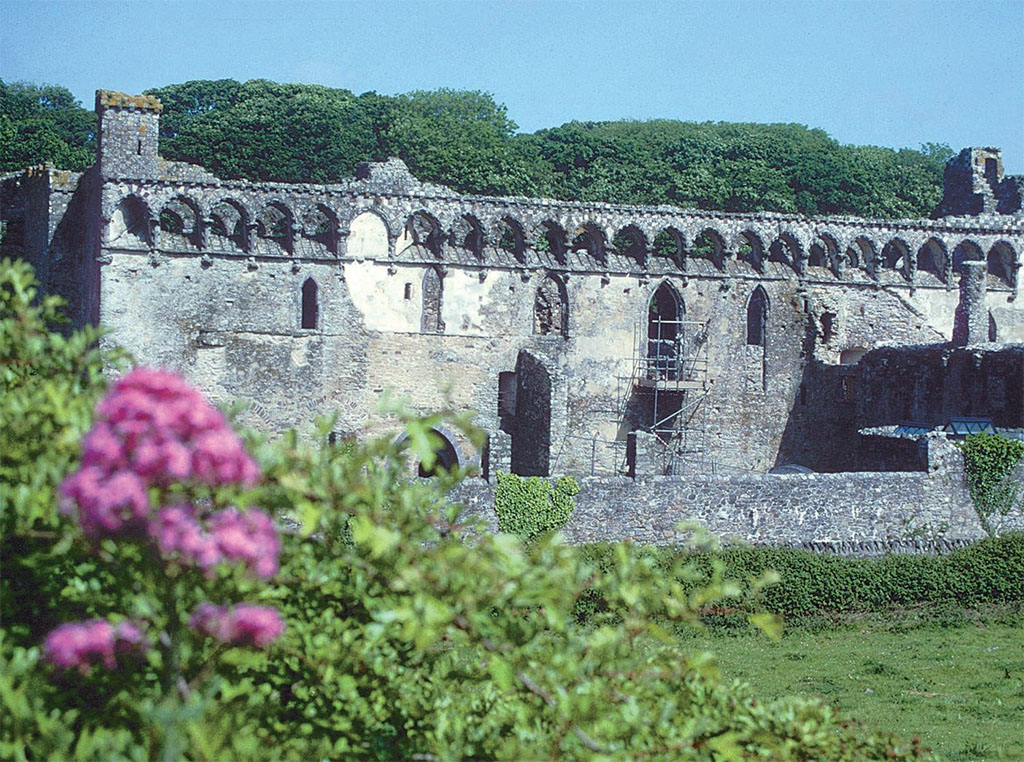
EVERY MARCH 1ST, Welsh ancestry worldwide celebrates St. David’s Day by wearing leeks to honor the patron saint of Wales and to remember their ancestors’ victory over the Saxons during a battle in the 6th century. St. David had advised his countrymen to wear leeks in their caps to better recognize each other during the heat of battle. Apparently it worked.
Since perhaps as early as 1170, when legend has it that Welsh prince Madoc ap Owain Gwynedd arrived on North American shores, Welsh culture has quietly inhabited the New World. The National Welsh American Foundation’s Web site lists more than 40 Welsh or St. David’s societies throughout the United States. Outside the States there are 14 organizations—including societies in Hong Kong and Japan—with an additional nine in Canada.
Their goal is to promote Welsh culture. Each society has its own Web site that provides a mission statement. The most comprehensive of these is from the National Welsh American Foundation, which states that the organization “promotes and shares the history and cultural heritage of Welsh-Americans; coordinates cultural and educational activities of Welsh-Americans; encourages the exchange of artists and scholars between Wales and the United States to share the Welsh language, music and culture with the world; provides financial assistance through scholarships, fellowships and study grants; assures a unified effective voice for Welsh-Americans; and supports Welsh-American groups in their relations with corporate, philanthropic and governmental organizations.”
Each of the societies echoes these sentiments with offerings compatible with their respective size. All are welcoming and do not care if one is Welsh or not. “What if you’re not Welsh, just interested?” asks the Alabama Welsh Society. “No problem, we will be glad to have you!” The goal is, plain and simply, to keep Welsh culture alive. The societies do this by giving notice of social events, such as concerts, movies, art exhibits and highland games. Updates on rugby teams pepper the Web sites.
[caption id="HandsAcrosstheSea_img2" align="aligncenter" width="689"]

©Kathy deWitt/Alamy
[caption id="HandsAcrosstheSea_img3" align="aligncenter" width="689"]

Dana Huntley
Most of the societies have monthly meetings, and almost all provide a Welsh history link as well as some sort of tutorial of the Welsh tongue—a lovely language that looks impossible to pronounce but sounds like song lyrics. These tutorials can be as rudimentary as an English-Welsh dictionary and pronunciation key, while quite a few, like the Welsh American Society of Northern California, offer Welsh language classes. The services do not end there: The Idaho Welsh Society provides a map of Wales and photographs as well as travel and shopping links, and some societies even offer scholarships.
The Welsh League of Arizona’s Web site features a prose page and a poetry page that is in keeping with the ancient Welsh love for bards and storytelling. One rather good poem from this page repeatedly asks, “Pwy sy’n fel ni?” (Who is like us?), and the answer is always, “Neb” (Nobody).
[caption id="HandsAcrosstheSea_img4" align="aligncenter" width="1024"]

www.britainonview.com/Rod Edwards
Every Welsh or St. David’s society will commemorate St. David’s Day. Some will sponsor formal dinners, while others offer quiet suppers of bara brith, toffee, leek soup and Welsh cakes, with hymn singing and a line or two from Dylan Thomas. Many Welsh expatriates will celebrate by going to a nearby pub and tossing back a pint or attending concerts of all-male choirs—a passion in Wales. You will know a son or daughter of Wales on that day by those wearing daffodils or leeks or displaying dragons—all symbols of Wales. Flags of red, white and green will fly along with greetings of “Dydd Hapus Dewi Sant” (Happy Saint David’s Day).
As for the patron saint of Wales, what little that is known about St. David, or Dewi Sant, comes from a Latin manuscript written nearly 500 years after his death. This account credits David with spreading Christianity through Wales and parts of Britain and Brittany, which were largely pagan at that time. Born around 512, David was the grandson on his father’s side of King Ceredig of Ceredigion, a region in southwest Wales. Legend has it that he was the grandnephew of King Arthur on his mother’s side. The young David received his education from a blind tutor named Paulinus at the monastery of Hen Fynyw. Afterward he took to the road on missionary trips, including a pilgrimage to Jerusalem.
David later settled at Glyn Rhosyn, in a remote corner of southwest Wales. There, around 550, he established a very strict, puritanical monastery where the monks drank only water, ate only bread and herbs, and worked long and hard to support themselves and the neighboring poor. A number of miracles were attributed to David, including healing Paulinus of his blindness, but the best-known miracle occurred when he was preaching at the Synod of Llanddewibrefi. As David spoke, those at the back of the crowd complained that they were unable to see or hear him. Suddenly the ground under David’s feet rose to form a small hill, and everyone could see him and hear what he said.
David delivered his last sermon just days before his death. In it he exhorted his followers, “Be steadfast, brothers, and Gwnewch y pethau bychain….” The last is a well-known Welsh phrase that means “Do the little things.” He died on March 1, 589. David had been made archbishop before his death, and was canonized in 1120 by Pope Callixtus II.
Today St. David’s Cathedral stands where David’s monastery once was. His 11th-century biographer was Rhigyfarch, the son of the bishop of St. David’s at the time the biography, Buchedd Dewi (Life of David), was written. It is said that Rhigyfarch might have written the text to enhance the bishopric’s importance and to prevent it from being absorbed by the Normans. Propaganda or not, the exploits of Dewi Sant are fit for a bard, and what more could a Welshman, or woman, at home or abroad, want from a patron saint?
Cymru am byth (Wales forever).





Comments